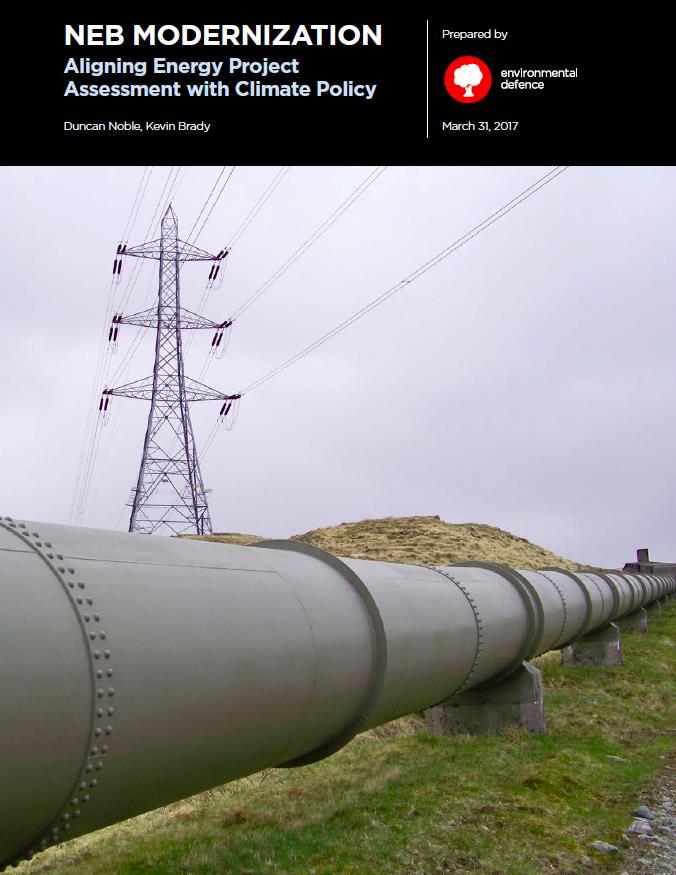A Climate Test for Canada: Aligning energy project assessment with climate policy
The federal government is overhauling the National Energy Board (NEB), Canada’s pipeline regulator. As part of the NEB Modernization process, Environmental Defence commissioned a special report on how to design a “climate test”. The climate test would ensure that major energy projects—like oil sands pipelines—fit within Canada’s climate commitments and make economic sense in a low-carbon world. On behalf of Environmental Defence my colleague and lead author Duncan Noble and I explored what the details of a carbon test would look like. After reviewing the research and interviewing leading experts we concluded Canada’s needs a two part climate test.
Part 1: Include a climate test based on the economic viability of projects in a carbon-constrained world. This test would determine if the project is economically viable in a carbon constrained world. For a project to be economically viable, the long-run market price for the products it produces (e.g., oil or other fossil fuels) needs to exceed its long-run cost of production in a carbon constrained world. This part of the test would be based on best available global energy-economy-emissions models that include the future price of carbon and future supply and demand for oil and other fuels. This test requires a broader analysis of economic viability that considers market constraints and the effects of climate policy on the price of fossil fuels and production costs among other factors.
Part 2: Include a climate test based on carbon budgets. This test would determine if the project fits within a pre-defined carbon budget. This requires a determination of national and sector carbon budgets in line with Canada’s 30 per cent GHG emissions reduction target (by 2030, from a 2005 base year) as well as the Paris commitment to limit global warming to 2°C/1.5°C. This test would be conducted outside the NEB at a strategic level perhaps within a revised environmental assessment process or at a political level where broader stakeholder interests and sustainability impacts and benefits are evaluated.
To read the full report click on the white paper cover below.

 Sustainable Enterprise Consulting
Sustainable Enterprise Consulting